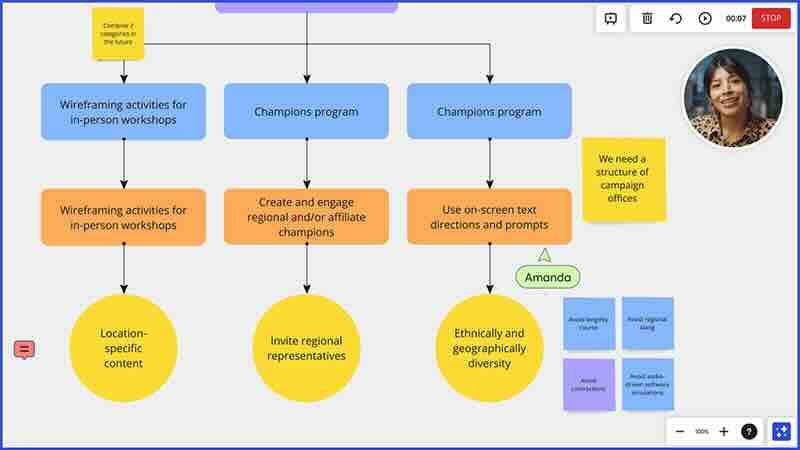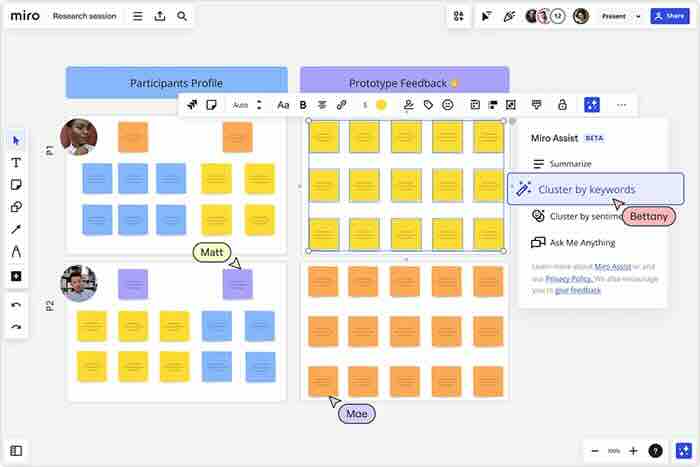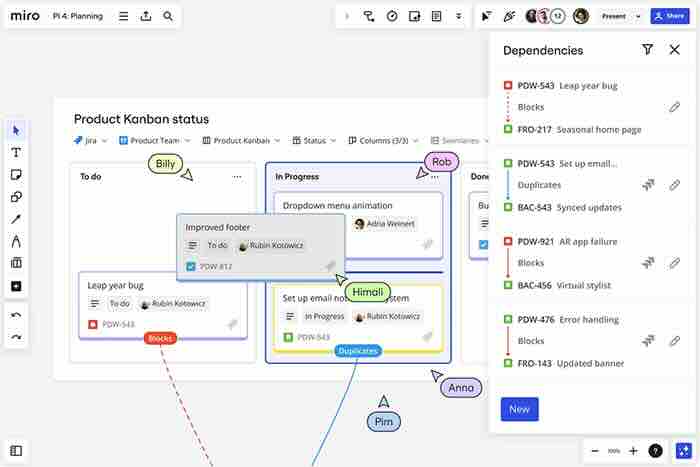Like many other things in education, collaborative learning has different interpretations by different people. Some believe that using a platform in which students can upload their file inputs to a team project is the essence of collaboration. Others believe that having students work together on a document that allows multiple students to edit together is it. Although these examples may be considered as student collaboration, what they are missing is the ability for students to grasp the totality of the project or what we call the big picture. When using the methods mentioned above, students are engaged in a limited view of a specific content that may be focused on one aspect of the entire project, without ever being able to see how their contribution affects the project they are trying to solve. In order to engage in meaningful collaboration, students’ contributions need to be daily informed by the work of the entire team, and how their joint efforts are geared towards the problem at hand.
What Is Collaboration?
Collaboration is a joint intellectual effort of students, teachers and community members to investigate a question or problem. When students work in groups on an intellectual effort to explore a problem and build understanding, they form a learning community.
Collaborative learning was founded by humanity educators in higher education, based on theories of constructivism (Piaget and Vygotsky) and critical pedagogy (Freire), with the goal of shifting the structure of authority in education.
Vygotsky’s zone of proximal development is described as the difference in performance between what a learner can accomplish unassisted and between what he could accomplish with the assistance of a more knowledgeable or capable other. Therefore, the zone of proximal development is the range of cognitive tasks that you can learn with the assistance of someone who knows more. Some tasks you may not be able to master even with assistance, while there are tasks you could complete with just a little help. The practice of collaborative learning is typically based on the design of open-ended tasks for students to work together to reach a consensus.
What Is Meaningful Collaboration?
When a teacher assigns a project about the planets and your team’s interpretation of the project is to have each team member work on one planet, the assignment may be fulfilled when each team member finished their part, but neither of your team members learned anything about the entire topic or each other’s work. Meaningful collaboration is a process in which a team is trying to get to the bottom of a problem by each contributing their part to its solution. Each member’s contribution is not parallel like in the example above, but rather part of an iterative process, in which the final goal is a permanent influence and the tasks performed by each team member are constantly measured against this goal. In order to accomplish this, team members are constantly informed about each other’s work and the ways by which it all leads to solving their problem. This process entails multiple brainstorming sessions, leading to repeated iterations of the same tasks until they are able to solve the problem and reach their goal.
How Can You Do Meaningful Collaboration?
Collaboration is not new. It can be done the traditional way. What that means is that students work in teams, get together regularly to brainstorm about the project, divide the work amongst themselves, and make sure that each of their efforts leads towards solving their problem. This approach can last longer, requiring that the team gets together physically multiple times throughout the duration of the project to brainstorm ideas , discuss the project and produce multiple handwritten summaries of meetings and work papers. All this is not happening in real time, which may lead team members to produce duplicate work that can be discovered only when the team will finally meet.
The alternative way is collaboration using technology. There are multiple applications that list team collaboration as one of their features. As I mentioned earlier, those may include the mere upload of files to a team project or team editing of one document at a time. Features that may be considered as collaboration, yet lacking everything that is necessary for a meaningful collaboration.
The Miro Solution For Meaningful Collaboration

One application that thought all this out and came up with the optimal solution for meaningful real-time collaboration is Miro. Miro is a digital collaboration platform designed to facilitate remote and distributed team communication and project management. Miro is the online workspace for innovation that enables distributed teams of any size to dream, design, and build the future together. With Miro, users take advantage of a full set of collaboration capabilities, make cross-functional teamwork effortless, and organize meetings and workshops: use video chat, presentation, sharing, and many other features and all this is provided in real-time.
In Miro, students can create an online whiteboard that they can use to visualize their ideas and work on projects either individually or with a team. By using a set of toolbars on the top, left and bottom-right, students can start creating content by importing, moving, editing, and deleting objects on their board – all the changes that they make on the board are saved in real-time.
Miro’s collaboration features are considered at the top of what collaboration can be because it enables distributed teams to work effectively together, from brainstorming with digital sticky notes to planning and managing agile workflows. Students can Invite their peers from their school or from other remote schools to hold real-time brainstorming and ideation sessions, or work at their own pace with students from different time zones.
Miro is interacting with 150+ custom apps, allowing students to present files from their favorite apps in its boards. Files pages can be separated and spread out on the board, making it easier for team members to reflect on. This makes it so much easier to see the big picture in one place without having to distribute their attention between the multiple applications that students are using for their project.
Seeing The Big Picture
One of the biggest advantages that Miro provides is the ability to see the big picture at all times. Students can see each other’s contributions in real-time by laying out their work on a common board, as a slideshow presentation in a series of frames and a slideshow presentation that includes activities to help run engaging and effective meetings and workshops.
When using a board, students can guide collaborators through the board by navigating across the canvas in free mode while participants follow the view on the board in full screen. When presenting a slideshow presentation, each frame acts as a slide and when activities are added to the slideshow it helps facilitate a more collaborative session, which is great for workshops and guided meetings. Activities allow participants to interact on the board with sticky notes and reactions, and add pre-planned activities for mid-meeting breakout sessions, voting, or timed brainstorms.

The voting tool allows users to set up anonymous voting sessions. Breakout frames help the teacher prepare and run group activities on the board. The teacher can divide participants into smaller groups and give them a specific task to encourage participation. With breakout frames, the teacher can guide students to their own virtual collaboration space to create meaningful connections and the timer can help them stay on track during an activity, discussion or brainstorm.
Meeting and Brainstorming
Regular meetings with team members are essential in making sure that a project will reach its intended outcome. In many of those meetings, students express their opinion about a specific topic and end up using sticky notes to write their point of view. As team members attempt to reach a negotiated resolution, they may use sticky note clustering for voting. Miro provides sticky notes clustering. The clustering tool arranges sticky notes into containers, sorting them by tag, color, author, and keywords – or the user can create their own cluster.
If team members miss a meeting or have difficulty recollecting what it was all about, Miro provides TalkTrack, which allows users to record an immersive audio or video walkthrough of a Miro board and leave it for other teammates to review. Teammates will be able to interact with Talktrack board recordings by navigating through the board. It also allows team members to collaborate asynchronously in a more inclusive and efficient way than ever before.
Project Management
Project management can make or break a project. Many attempts by teachers to run project-based projects in their classroom failed because they realized that they did not pay enough attention to project management. Miro has all the tools necessary to run team planning sessions, track team progress and keep the entire planning workflow in Miro.

When starting a project, clear task assignment is key. Miro cards provide teams with a structured way to organize and assign work, provide details to align stakeholders, and keep everything on track. The cards can also become part of the Miro Kanban board, which can be used in a variety of use cases starting with agile development and ending with the team’s task tracking. The color coded cards can be traced to each individual user and all team members have access to them and can comment on them, making each team member aware of the state of the entire project and each task in it.
It Is Free For Education
The best part of Miro is that it is free for education. Miro provides the free Educational plan to staff members and students of educational institutions. Qualified educational institutions include all accredited public or private schools, including:
- Middle schools and high schools
- Junior colleges
- Colleges, universities, and technical schools
- MBA schools
- Online schools accredited by the local Department of Education and awarding an academic degree.
Note: I do not have any affiliation to Miro and I am not working for the company. As a founder of the Project Pals application, which we had to close two years ago, I was looking for something that was close to what we offered in Project Pals. I must say that Miro’s features exceed those that we offered in Project Pals in most respects. But as a tool that was not specifically created for the classroom, it lacks the classroom management features that Project Pals had. Nonetheless, it is a dynamite collaboration and project management tool that I highly recommend.
